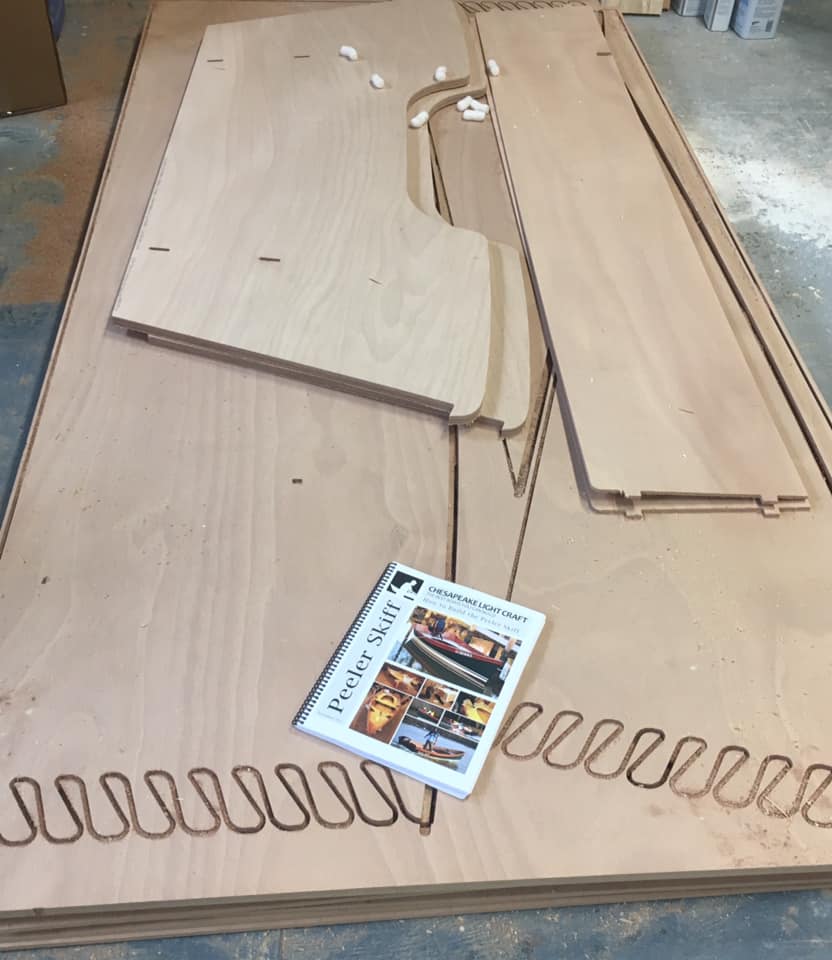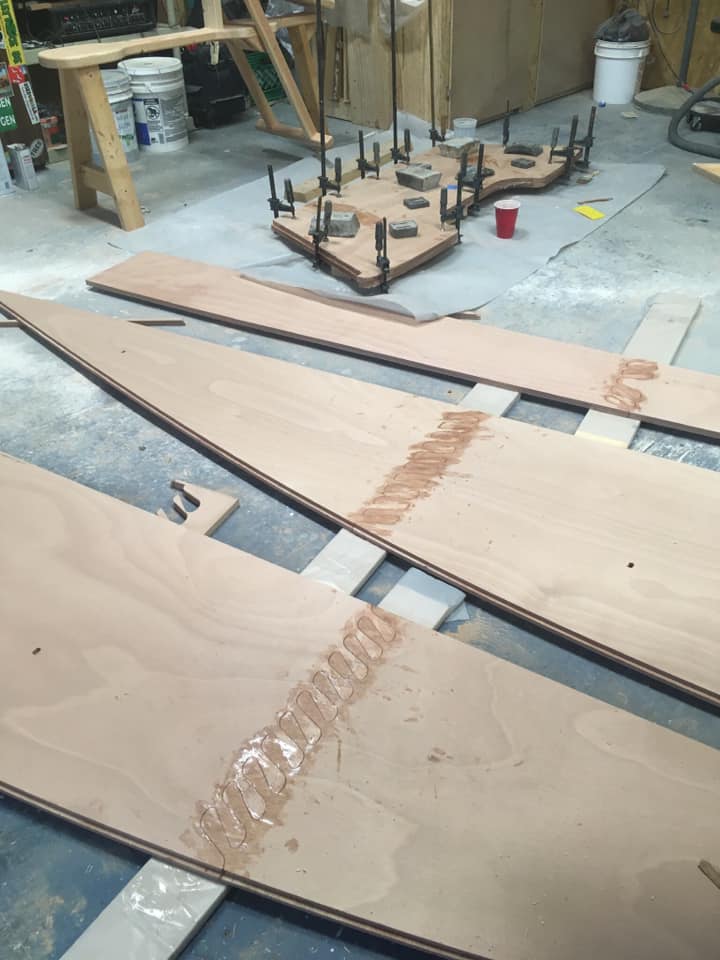I work for Chesapeake Light Craft as a boatbuilder. Today I started a Peeler Skiff. I have built most of their designs, but it is my first time building this one. Today I did the big job of unpacking the kit, then I glued the bottom halves to length and laminated the two halves of the transom together. The thick bottom panels fit very tightly at the puzzle joints and required heavy persuasion with my wooden mallet, but with a little fuss they went together nice and flush. Notice that my epoxy jugs are on top of a kerosene heater. It is crucial to warm your epoxy during the cold months to make it pump and mix easily. This type of heater doesn’t get hot on top, but it gets warm enough to keep the resin nice and viscous. (Pro tip)

The kit came on a pallet, and the pieces are still within the plywood they were cut from. They are held in with little wooden tabs which have to be cut to release the parts. I used a Japanese pullsaw to cut them, and a Shinto Rasp to take off the remaining nub of the tabs. If you don’t have these two tools, do yourself a favor and go to the CLC site and order them for yourself.

Epoxy warming on the heater. I have put 1x6 boards wrapped in heavy plastic under the puzzle joints.

Normally it would be necessary to put a board wrapped in plastic on top of the joint and weigh it down with something heavy, in order to make sure the joint stays flush. But these went together very tightly.
The transom parts in the background are laminated together. This is an easy job to do. It requires a couple of hours after clamping to come by periodically to clean epoxy squeeze-out. I worked on a new birdhouse while I waited for the epoxy to cure. It is always best to clean epoxy away while it is wet. It is very difficult to sand.

 return to section:
return to section: 










